“Gotta say Elden Ring becomes so much less fun at the end.”
On May 24, 2022, my friend Andrew Thomas pinged me via Facebook chat with that message. While I had crammed most of the game into a single frantic week in February to review it for launch, Andrew had been plugging away at it casually and sending me his observations along the way.
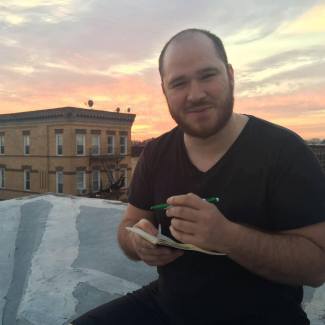
I revered Andrew’s opinion on games. He was a video game creator himself who had developed two titles — a motion-controlled maze game called Roll Control and a trippy spin on Devil Daggers titled Shillelagh — so we frequently talked about game design. He loved constructively picking apart games and he especially adored the Souls series.
As we dissected the game’s fatal flaws for an hour, I felt a selfish sense of vindication. My critical take on Elden Ring left me feeling like an outsider as peers hailed it as a generational masterpiece. Had I just become a grumpy cynic? Andrew’s shared critique reassured me that I had not, melting away months of quiet insecurity in the span of an hour.
That was one of the final conversations I had with him. One week later, on June 1, he was struck and killed by an SUV in Brooklyn. He would never finish Elden Ring.
Andrew’s sudden death put an ugly black stain on the end of a beautiful life filled with limitless potential. As I struggled to grapple with my grief, that final conversation about Elden Ring loomed in the background. I wasn’t upset that he never got to finish the game — in fact, it was perhaps better that he didn’t. But the more I struggled for a sense of closure, the more I saw that Elden Ring’s majesty and tragedy mirrored Andrew’s life, right down to the end. Both journeys intertwine like the roots of the game’s iconic, omnipresent Erdtree, and that realization gave me new ways to understand both of them.
Limgrave
Elden Ring opens with quiet tension. After an ill-fated boss fight against an ultrapowerful Grafted Scion, my Tarnished hero wakes up facedown in a damp cave. I traverse a dreary series of corridors familiar to Dark Souls fans, then step onto an elevator lift, which begins rising through a pitch-black passageway. It’s like I’m passing through a birth canal, entirely unsure of what life awaits me on the other side.
At the top, I have no option other than to walk up a set of stairs toward a metal door. With a strong heave, I lift it from the bottom and it opens up with a thunk. Once I cross the threshold, my entire world changes.
The drab stone textures that felt like they were closing in on me disappear behind me as I step into a flood of green and gold as far as the eye can see. A title card flashes on-screen introducing me to my new home: Limgrave.
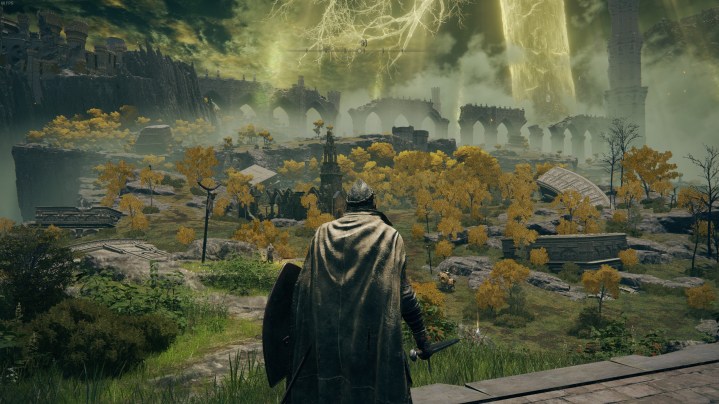
This is the moment of contrast that makes Elden Ring’s opening so breathtaking. A claustrophobic prelude turns a fairly standard open-world introduction into a revelation. I have exited the catacombs and now stand on the precipice of freedom, like a 16-year-old with a freshly minted license and a tank full of gas. It’s a paralyzing sight and players might feel their thumb fall away from the control stick for a moment as the painterly landscape washes over them. Hills roll as far as the eye can see, and an enormous golden tree, the Erdtree, hangs above your head, leaving you to wonder how much more of The Lands Between stretches behind it.
You don’t know what adventures await you on the other side of that door, but in that moment, the world feels limitless. Could there even be an end to it?
Medfield
I had been friends with Andrew for so long that I couldn’t tell you when we first met. At some point, I’d begun telling people it was in fourth grade, which seemed far enough back that neither of us would fact-check each other on it. After his death, I’d find out that I had undersold the length of our friendship. His mother recalled a story of him coming home from kindergarten and telling her about this cool kid he met, Giovanni. (Hey, I said I respected his judgment on games, not people.)
We both grew up in a small Massachusetts town called Medfield, a place that’s most known around the state for being “not Medford.” Its only creative claim to fame is that Walt Disney happened to love our town, and peppered references to it in some of his company’s classic films. For instance, it’s where 1961’s The Absent-Minded Professor famously (well, famous among Medfieldians, who have few town trivia facts to work with) takes place.

As two eccentric kids growing up in a vanilla town, Andrew and I became fast friends — something that was bound to happen in the 1990s when two kids who loved video games crossed paths. In fact, my earliest memory of gaming journalism came from Andrew. In what I think actually was fourth grade, Andrew wrote a short blurb for a class newspaper about a new video game that had just come out: The Legend of Zelda: Ocarina of Time. I had never heard of Zelda, but his brief write-up wowed me. In a few quick paragraphs, he painted a picture of what felt like a grand, impossible achievement for games. I wouldn’t see so much as a screenshot of the game for years after, but I didn’t need to. I knew exactly what it looked like.
Andrew and I mostly bonded due to our creative nature, though his brain operated at a pace that I couldn’t comprehend. We both had a drive to make things — anything — no matter what the medium was. Our creative alliance began in grade school when we started filming skits with our parents’ camcorders alongside a growing group of friends. In Andrew’s most iconic string of work, he puppeteered a vintage Sealab 2020 action figure that he called Frank Zappa through a series of goofy slapstick comedies. When I watched him work, I regarded him on the same level as a comedic genius like Jim Carrey.
Medfield was a blank canvas and I watched him fill it in around us with every tool he could grab.
The larger our world became, the further I saw Andrew’s talents stretch. His films became more sophisticated, moving to live-action efforts. In one of his expertly choreographed, music video-like fight scenes, I played a man with badminton racquets for hands squaring off against a government assassin. At the end of high school, his crowning achievement came in the form of The Dreams, a surrealist anthology film that looked to capture the fluid and off-kilter nature of dreams. In a sequence that has never left my mind, Andrew filmed one of our friends on a flooded section of his street, creating an illusion that he was walking on water. A camera filter distorted the colors of the plants surrounding the street, giving them an unnatural hue that looked both beautiful and otherworldly — a landscape not dissimilar from the ones I would see over a decade later in Limgrave.
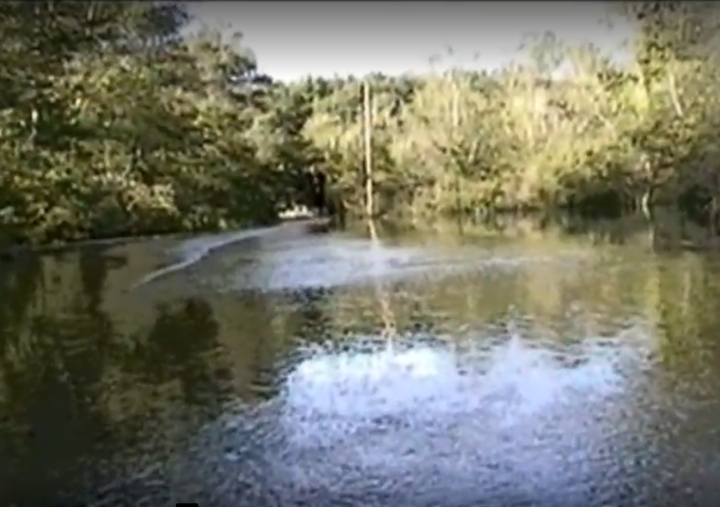
Andrew’s creativity had no limits. His childhood doodles became works of fine art, his love of punk music led to the formation of our truly subversive rock project called Aguasaurus, and his fascination with shapes turned him into a brilliant sculptor. The more he engaged with the world around him, the more he was driven to experiment. Why constrain yourself to one skill set when there’s so much to play with in the world? Medfield was a blank canvas and I watched him fill it in around us with every tool he could grab.
Temple of Eiglay
Midway through my Elden Ring playthrough, I waltzed into the Temple of Eiglay, a church hidden deep within the labyrinth-like Volcano Manor. I was entirely unaware that it would represent a turning point in the way I played the game. When I entered its cathedral-like expanse, I came face-to-face with one of Elden Ring’s most abominable foes: the Godskin Noble. The grotesque monster is a humanoid figure draped in thick layers of flesh that hang around his hulking body. Upon walking into the church, he slowly makes his way down the center aisle, accidentally knocking pews aside with his loose skin. Like most fights in this series, what ensues is a war.
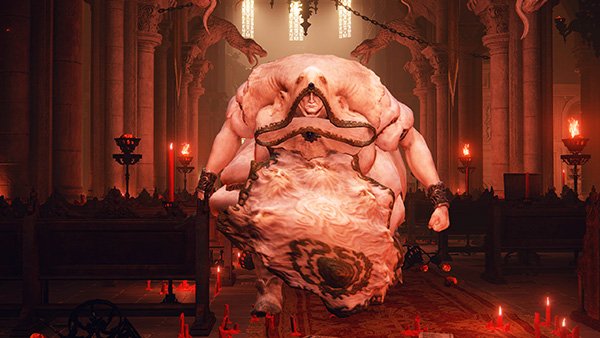
I spent hours battling the Godskin Noble, making little progress. Each death became more frustrating than the last, as I simply couldn’t nail down the timing needed to avoid his massive arsenal of attacks. Were I not reviewing the game, I may have simply quit it. After 30 hours of riding around The Lands Between and taking down powerful foes, I couldn’t understand why I wasn’t growing. Hadn’t I retained any skills? I felt as helpless as I was when I first stepped into Limgrave, and The Lands Between seemed less a space of infinite potential than a tiresome gauntlet of never-ending failure.
In a moment of desperation, I looked at how I had built up my character. My stat distributions were haphazard and I had equipped whatever my highest defense armor was without a second thought. Most damning, though, I was still using the same starting lance my character had in hand when she woke up in that opening crypt. By this point, I had spent so many valuable resources to upgrade it that letting it go felt like a waste of effort. Perhaps the issues I was experiencing weren’t with the game. Maybe I was just too scared to step out of my comfort zone and experiment, a lesson I needed to learn from Andrew.
My battle with the Godskin Noble felt entirely new, like painting with a different brush.
I went into my inventory and started scrolling through the weapons I’d picked up during my adventures and quickly forgot. A curved sword caught my eye, for no other reasons than its high stats relative to what I had equipped and its distinct shape. I tossed it on and took out my frustrations on some nearby grunts, using its spinning slash attack to wipe them out with pizzazz. Yeah, that would do.
My playstyle instantly metamorphized. Rather than carefully prodding enemies from afar with my weak lance, I was dancing circles around them with quick slashes. My battle with the Godskin Noble felt entirely new, like painting with a different brush. After a few attempts, learning the nuances of my new skills on the fly, I took down the hulking monster with ease.
I suddenly felt reinvigorated. The Lands Between hadn’t changed, but my perspective on it did. My mistake was seeing it as a static world to be conquered. Instead, it was every bit the creative sandbox that Medfield was for me growing up. I just needed to see it through Andrew’s eye.
Bushwick
When most people head off to college, they naturally drift apart from their high school friends. That was far from the case with my Medfield gang. As fate would have it, several of us all moved to New York City after college and reunited in Bushwick, a neighborhood in Brooklyn. Andrew and I would become roommates for a few years, living together in a crappy two-bedroom apartment with a third friend sleeping on a fold-out couch in the living room.
Even when I moved out, our lives kept intertwining. When I was laid off from a job I’d held for four years, Andrew immediately recommended me for a role at a 3D-printing startup he worked for as a community manager. We soon became co-workers who got to continue our creative alliance professionally.
I don’t wanna work at more shitty startups.
We both had reached a turning point in our careers, and that shared trajectory brought us closer together. Prior to my 3D-printing job, I had spent six years working in website quality assurance. Like my lancing days in Limgrave, I was honing a craft I had no interest in using long-term. I knew Andrew was in a similar boat, but he wouldn’t fully come to terms with that himself until after he was unceremoniously laid off on a Wednesday morning alongside 15% of the company’s staff.
Over the next few years, I watched Andrew examine how he wanted all of his various skills to ultimately come to a head. He was an artist with a background in sculpting and an expert at community building, and he had begun exploring his love of video games even further. He became a developer overnight, creating a prototype of a game called Roll Control, where players could control a ball by using a balance board controller. What began as a primitive experiment soon became Andrew’s primary focus, as he set out to craft a project that reflected his unrestricted imagination.
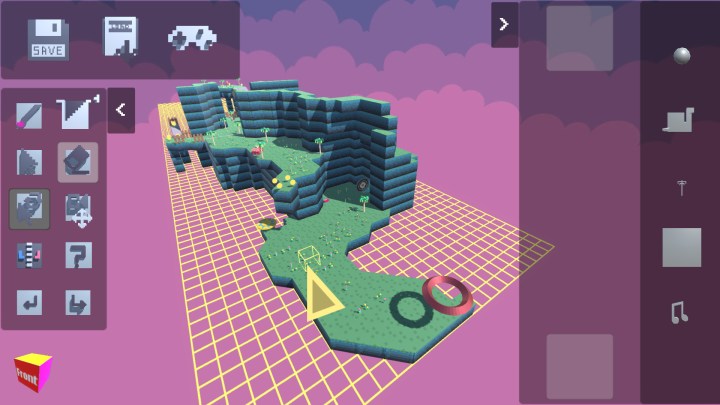
The gaming industry turned out to be fertile ground for Andrew’s mix-and-match basket of skills and passions. In one of his classically surprising moves, he invited me out of the blue to a Discord server he co-founded to serve as a gathering point for the New York City indie game design scene. I initially assumed it was something that he’d forget about in a week, until it blossomed into a thriving community with close to 1,000 members — developers, artists, audio engineers, and even just Andrew’s friends who just wanted to see what he was up to.
Andrew was infamous for starting projects and then dropping them right before they reached their final form. I remember him spending months prototyping and playtesting an original board game called Terradice, only for him to rush on to his next idea once it finally felt like he’d cracked how to make it work. It was always something about him that puzzled me; I could never grasp why he’d put such a tremendous amount of time and effort into an idea only to let it fizzle out.
His Discord server was proof that he was starting to change, whether intentionally or not. After decades of curious experimenting, Andrew’s various abilities all felt like they were heading toward an endgame; I could see him zeroing in on his final build. His influence on the local gaming scene was growing, and he was flexing more skills as a developer with his second game, Shillelagh. After quitting a high-paying job that he felt unsatisfied with, he didn’t exactly know what his next steps would be — but he told me that he’d at least locked in one key decision.
“I don’t wanna work at more shitty startups,” he wrote in what would be his final words to me.
Crumbling Farum Azula
The review period for Elden Ring was as unforgiving as the game itself. Critics had just over a week to pore through a 100-hour game with a gigantic world to explore. While rushed timelines like that are all too common for game writers, this window was especially egregious. Anybody who wanted to get a review posted in time for the game’s embargo, when we were free to share our impressions, would need to spend most of their waking hours on it. That was made worse by the fact that Elden Ring is an incredibly challenging game that’ll sometimes hold you up for hours and leave you no choice but to knock your head against the brick wall until either you, or it, cracks.
My breaking point came amid the game’s final stretch. As the story locks into its endgame, players are transported to Crumbling Farum Azula, a small island hidden off to the east of the game’s central continent. The open world starts to close in, forcing players to follow a mostly set path through the island and fight a few bosses. You know your long journey is coming to an end.
And it absolutely sucks.
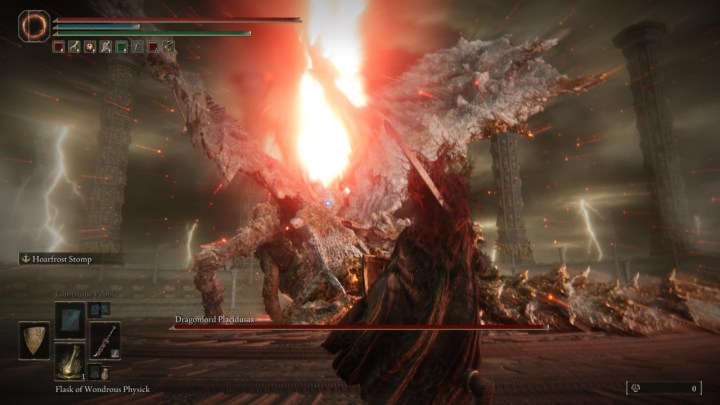
Crumbling Farum Azula contains Elden Ring’s worst boss encounter: the Godskin Duo. Remember the fleshy nobleman that gave me trouble earlier? He returns as a mandatory fight, but he’s not alone. He’s joined by the Godskin Apostle, who is essentially the Luigi to his Mario. The fight requires you to take down both at once, but if that weren’t enough, they also regenerate after you kill them, forcing you to take them down multiple times during the fight.
It’s a maddening encounter that feels like the developers hastily tried to slap together a sufficiently hard late-game fight. While I was able to beat them after hours of struggle, I left feeling notably less satisfied than I did after beating the Godskin Noble. After rising above all the adversity the campaign threw at me, it felt like I’d been hit with an unfair sucker punch. And what made that sting more is that I no longer had the choice to duck it by adventuring off into the world; this was the end.
It’s this section of the game that prompted Andrew to DM me about his own frustrations about his playthrough, which he’d been gushing over up to that point. “Yeah the last arc of the game feels flat,” he wrote. “Nothing new is introduced.”
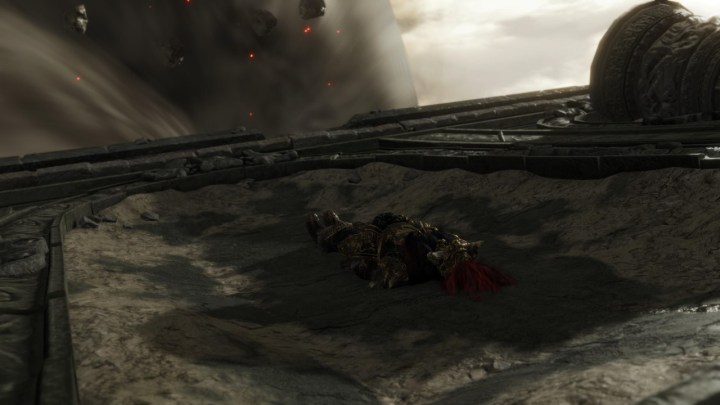
It’s a critique that made perfect sense coming from someone like Andrew, whose entire ethos revolved around trying new things. Elden Ring’s final act is its most static, as players are sucked out of the open world and forced to sink or swim if they want to wrap up the story. All that limitless potential is taken away. It’s as if you’re suddenly back in that drab crypt in the opening — the one designed to emphasize how much more appealing the open world beyond its doors is.
For Andrew, it was a rug pull at the end of a beautiful experience. Crumbling Farum Azula is a cruel, frustrating, and deeply unsatisfying end to a game that felt like it was building to something special. “I think the game gives you too much freedom in the beginning … and it can’t deliver that rush again,” he wrote.
Clinton Hill
On June 1, 2022, my phone lit up with a notification. It was a message from a Facebook Messenger chat made up of our high school friend group. One of our friends had summoned everyone together with a dreaded @everyone tag. There was a pause and then a blunt follow-up. “Andrew was involved in an accident. He didn’t make it.”
You may want to skip the next paragraph if you don’t want the full details of the tragedy.
Sometime in the afternoon, Andrew was riding a Vespa scooter through Brooklyn’s Clinton Hill neighborhood. He was wearing a bright orange safety vest and abiding by the rules of the road when he stopped at a red light. As he waited, he was suddenly rear-ended by an SUV and thrown off his bike onto a sidewalk. The driver, who was under the influence of drugs at the time and operating a vehicle without a license, reportedly tried to speed off after the incident, pinning Andrew under the vehicle and dragging him several feet. He was taken to the local Methodist hospital, where he was pronounced dead.
Every piece of his past was coming together into what felt like his greater purpose.
After spending six months gathering the courage to write this, I still wasn’t prepared for how deeply unsatisfying it would feel to map out the end of Andrew’s story on paper. I had seen him grow and develop over the course of nearly three decades. By 2022, every piece of his past was coming together into what felt like his greater purpose. His childhood review of Ocarina of Time, his sculpture studies in college, his community management job, his work on Roll Control — each felt like another brush stroke on the way to Andrew’s final masterpiece.
Instead, I returned home, went to the church that I attended as a kid, and sat silently next to his open casket for an all too brief final moment. Medfield had become Crumbling Farum Azula.
The Lands Between
Satisfying endings can be very tricky to land, especially in action games, which depend on momentum. The need for constant escalation, sometimes over an enormous span of time, can lead to late-game moments that simply fall flat instead of crescendo (see BioShock Infinite’s bizarre tower defense set piece, for example).
In dissecting Elden Ring, Andrew identified a much more fundamental flaw inherent to the open-world genre. It’s a problem he saw in The Legend of Zelda: Breath of the Wild, and in classic Andrew fashion, his explanation came complete with a fine art metaphor.
“It’s the abstract expressionism problem of the blank canvas,” he wrote during our last conversation. “The first gestures are the biggest and boldest, the rest are filling space.”

Elden Ring’s biggest strokes are its most memorable ones. The moment when you first set foot into Limgrave. The moment when you open a chest and are suddenly transported to the utterly alien Caelid. The moment when you step on an elevator lift and discover an entire underground world. Those jaw-dropping sequences make the early hours of Elden Ring feel unlike anything else.
But the more it covers the canvas in bold splashes of paint, the less space it has to work with later on. By the end of the adventure, it feels like its creators are going back into a nearly finished masterpiece and filling in the detail work. That’s an important part of the artistic process, but (as Andrew said), it’s “so much less fun” to experience up close.
Ever since I played Elden Ring in February, I’ve been harboring a quiet resentment for it — one that was suddenly compounded by the death of a loved one months after its launch. When I think back to my time with it, I’m suddenly stricken with grief. Why did this boundless experience have to culminate in such a cruel, anticlimactic finale? What was the point of spending so much time in this world hoping for a payoff to the struggle, one that would never come? I loved so much about my journey through The Lands Between, but I was left trying to see that once golden Erdtree through the smoke that would eventually engulf it.
Andrew was always more level-headed than me and had a funny way of boiling down what would be an existential crisis for some to a simple aside. “I’m OK giving up 100 hours into a game,” he wrote. “It’s long enough.”

Those 12 words struck me as throwaway snark at the time, but I now realize they’re the key to unlocking his entire worldview. Andrew filled his life with those bold gestures that he loved, the kind that only come when you’re painting in the moment rather than worrying about how each color will mix together later. He didn’t need to follow through on each mark to find value in them. I couldn’t grasp that philosophy while he was alive. Perhaps that’s how I ended up walking around the Temple of Eigley with a +14 beginner’s lance.
The struggle I have with Elden Ring and my relationship with Andrew is one of closure. I keep looking to both and clawing for some kind of finality that will put a neat period on stories that feel hauntingly unresolved. Now, looking back through our final conversation, I’m realizing that Andrew gave me that answer one week before he passed away. I keep searching for meaning in hours that don’t exist rather than finding peace in the 100 that do. Every memory of Andrew feels like lifting that metal door and crossing the threshold into Limgrave for the first time. The wonder, the joy, the love — it all floods into frame like those swaths of green and gold. Though I know where the journey ends, I will always find my friend in The Lands Between.
“Arise now, ye Tarnished. Ye dead, who yet live.”



